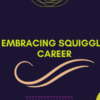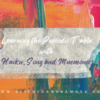Manage, Treat and Overcome Teenage Acne by following these 3 Steps

“Dear pimples, if you’re going to live on my face, I need to see some rent.” – Unknown
Funny lines, but then it’s not funny to have Acne on the face. As pre-teens and adolescents sets in, these red bumps also sets in. The severity of having them will vary, but then no one will pass this phase blemish-free.
So what can be done to minimize pimples or how to manage them most effectively
Step 1: learn which among the four common types of acne lesions a teen has
Whiteheads: Clogged pores that close up and bulge out from the skin
Pimples: When the pore walls break, it allows contaminants to reach under the skin and leads to red mark with a bump
Blackheads: Clogged pores that remain open, leaving a dark top surface
Acne Cysts: Clogged pores that open deep in the skin, leading to larger infections. Sometimes it gets filled with a soft, yellow substance called keratin.
Step 2: Opt for treatment according to the acne type
Whiteheads or Closed comedones
At home, one can try removing whiteheads by using facial steam, Apple cider vinegar, lime juice, or warm honey or Aloe Vera plus lemon juice. These can be even treated using over-the-counter benzoyl peroxide cream or with prescription medications.
Pimples
Tea tree oil, green tea extract, Aloe vera, Honey and cinnamon, Rosemary extract, and Brewer’s yeast can be tried at home to treat pimples. Benzoyl peroxide or a retinoid containing topical ointment can often help. An oral antibiotic or other prescription creams may be needed sometimes.
Alert: Why you should not pop a pimple
[bctt tweet=”Alert: Why you should not pop a pimple.”]
While trying to pop a pimple, one might push bacteria and pus deeper into the skin, which can cause more swelling and redness. It can also result in permanent pits or scars.
Blackheads or Open comedones
Brown sugar, honey, and lemon juice exfoliation mixture, Baking soda, Tea tree oil, steam facial, and tomatoes can be tried at home to get rid of blackheads. Benzoyl peroxide gel can be applied sparingly four to seven times a week. If this doesn’t help then the doctor will prescribe a different medication.
Acne Cyst
Witch hazel, Aloe vera, Tea tree oil, Aspirin mask, and Applying heat can be tried at home. An oral antibiotic or other acne medication like isotretinoin is often necessary to treat these types of lesions to help prevent scarring.

Step 3: Follow the right skincare practices
- When washing the face, take care that you do not scrub your face heavily as this can irritate the skin and actually make acne worse
- Never clean acne prone areas with very hot or very cold water
- Do not cover acne with bandages
- Opt for makeup products that are oil-free, noncomedogenic, or nonacnegenic
- Never share your makeup products, as by doing so you are allowing the acne-causing bacteria, oil, and dead skin cells from other people’s skin onto yours
- While using hair sprays or gels, keep them always away from the face
- Never try squeezing or popping any pimples
- As much as possible avoid oily and junk food and include more fresh fruits, vegetables and whole grains to your diet
- Avoid wearing tight clothes or using exercise equipment that can rub against the skin and cause irritation
- Take bath right after exercise
Finally, Do not hesitate to visit a dermatologist for serious acne cases









1 Response
[…] Also read: Manage, Treat and Overcome Teenage Acne by following these 3 Steps […]